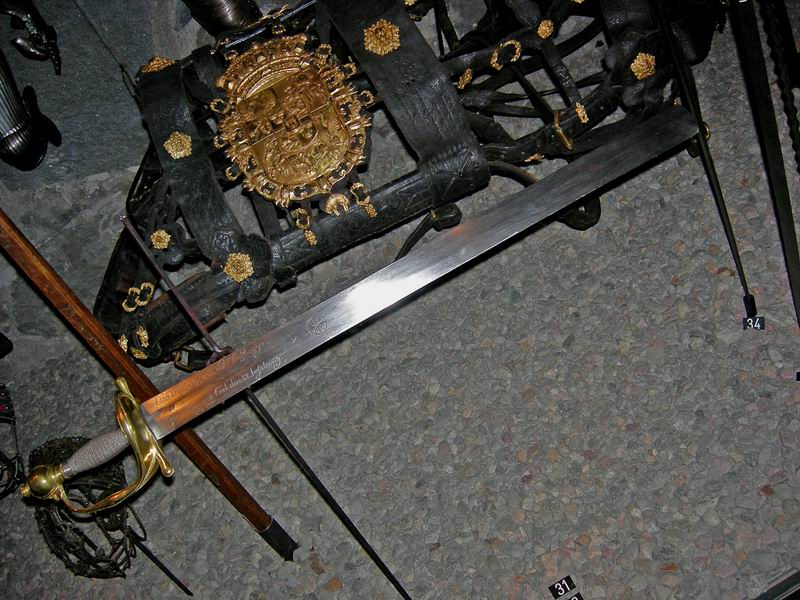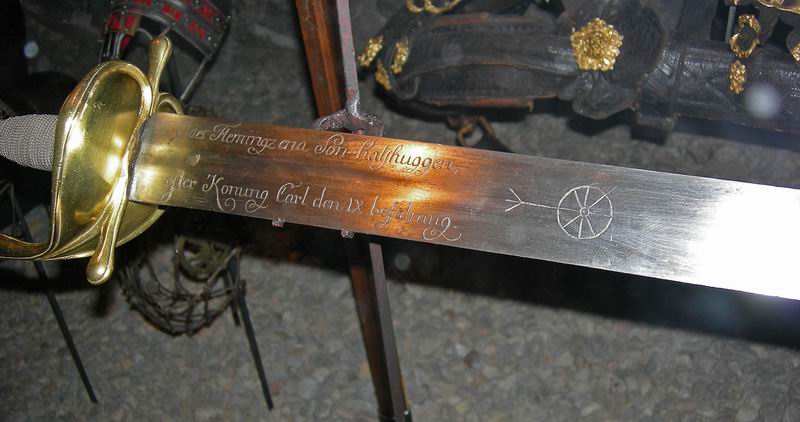I find the time is right to post phoyos of a beheading sword from the military collection in Stockholm - I thank my colleague (from another site) kisak from Sweden. I quote kisak's input:
" The odd hilt on the executioner's sword is due to it having been re-hilted after it's working life. The hilt is a Swedish cavalry officer's type, seen from the end of the 17th century to the early 19th. I would guess early 18th century for this one.
As for the blade, the museum attributes it to Germany, late 16th century. The inscription reads "Claes Flemingz ena son halshuggen efter Konung Carl den IX befalning", translating roughly to "One of the sons of Clas Fleming decapitated on order of King Carl IX". The son in question would be Johan Fleming, executed in Turku (Finland was the eastern part of Sweden until 1809) in 1598."


